MiniMe P63 (Open-Box)
Out of stock
The Earthquake Sound MiniMe P63 Subwoofer is a micro-sized, ultra-powerful subwoofer elegantly crafted in a high-gloss piano finish with beautiful grille-less flush-mounted drivers on three sides. It is designed for people who love music and movies at full throttle without bulky equipment in the living space. At less than 9″ on all sides, the P63 is easy to place on a low shelf, beneath a table, behind furniture, or in a corner.
The MiniMe P63’s incredible performance is achieved through the symbiotic relationship of the 6.5″ premium XLT active driver and two 6.5″ passive radiators coupled with a 500 Watts peak Class D power amplifier. Implementing dual passive radiators drastically increases the system’s capability and efficiency, resulting in ultra-low frequency reproduction at louder sound levels than previously achieved by any manufacturer of this size.
Compare
Features
- Three drivers with one active and two passive radiators
- Increases total sound radiating surface by 50 percent
- Earthquake Evolved Class D amplifier
- Auto/On/Off signal sensing circuitry
- Built-in 5.2V USB power port
- Used with Earthquake SWAT-2.4X or other wireless signal transmitters
- Low-level RCA inputs
- 0–180 degree phase adjustment
- Rubber stabilizing feet
- Standard room correction
- Volume control
- 110V/220V AC selector
- High gloss piano lacquer finish
Elements of performance
PMT
Piston-Max Technology is a patented Earthquake technology that enhances acoustical output while keeping a minimal footprint. Piston-Max moves the speaker surround to the outer edge of the cone body, resulting in a 20 percent increase in surface area. This translates into more sound and higher efficiency.
XLT
Extra Long Throw is a woofer geometry originally developed by Earthquake for heavy-duty industrial subwoofers to expand excursion potential over regular long-throw woofers. XLT and PMT work in great synergy as each technology expands on one of the two parameters for sound generation – Bore and Stroke. The level of sound possible is determined largely by Bore times Stroke. Ask any car buff, and they will say there is no replacement for displacement.
Passive Radiators
Passive radiators increase sub-harmonic frequency response and dynamic output capability. They overcome the limitations known from conventional closed and ported designs, which prevent radical excursion and deep response. The powerful XLT active woofer is pneumatically coupled to the passive devices, enabling battlefield-level effects to be reproduced effortlessly.
In-depth Information:
Designing the MiniMe P63 was a fun and challenging process. Other manufacturers have previously attempted to build subwoofers in the 6.5-inch form factor but with limited success. Scaling down a subwoofer while retaining performance is immensely difficult as it all comes down to physics. As anyone with an understanding of how American Muscle makes power will tell you, ”There is no Replacement for Displacement.” While “Decal-Tuning” looks cool in the parking lot, it gets you nowhere at the dragstrip. Some attempts were merely novelty subwoofers without any sliver of performance, or they were 1000 Dollar bling boxes with “2000” watt amplifiers utilizing drivers of only 5 inches of radiating surface that helplessly failed to grab the air even when pushed beyond Xmax. Being an engineering driven company, Earthquake Sound can not simply regurgitate past attempts, we had to blaze our own trail and make something that actually works.
It was our goal that this subwoofer should be less than 9 inches on all sides (smaller than any other manufacturer’s 6.5-inch form factor subwoofer), that its performance should rival competitive brands’ subwoofers in the 10-inch class, and that it should be equal to our own MiniMe P8.
Back to the physics, the only way to make this happen was to get the same Bore X Stroke cubic inches as the larger woofers. No fancy technobabble or waiving of magic wands would do. Our existing lineup of MiniMe Subwoofers utilize one active driver and one passive, this is a superb combination, however for the P63 we had to go one step further and add a second passive radiator. This had many benefits: first and foremost, it increased the total sound radiating surface by 50 percent. It also improved overall system efficiency since the total air resistance on the active driver was reduced, and it could thus reach its designated Xmax with much less power from the amplifier. This also reduced compression, resulting in overall sound quality improvement.
It further solved a rather comical problem we encountered early in the development phase when the subwoofer only had one active and one passive. The issue was that due to its small footprint and relatively low weight, the driver’s power and inertia would flip the subwoofer on its head with either the active or the passive facing against the floor. This caused the subwoofer to violently jump across the floor until the power cord was ripped from the socket or the subwoofer was destroyed by impacting the floor. Many harebrained schemes were suggested as possible solutions for this, from velcroing the unit to the floor – to a vacuum-assisted suction cup that would be electrically activated by a tilt meter so that when the sub sensed that it was about to tip, a small internal vacuum would blast into action and keep the sub sucked to the ground. Adding the third passive radiator solved all this as it balanced the subwoofer, and the axis of operation for the passive radiators was changed 90 degrees from the active driver.
Scoring up: we had gotten significantly closer to matching the Bore of our MiniMe P8, but still not. Flipping through our Rolodex of patents, it became evident that we had already invented the solution years ago with the Piston-Max technology used by our car component drivers. It is a unique way of mounting the driver surround to the underside of the cone and the outside of the chassis, resulting in a 20 percent increase in the sound-radiating surface area. Looking at the drivers in the MiniMe P63, it is easy to see that they are made differently from our other woofers. The result is that the MiniMe P63 has more sound radiating surface in relation to its total surface area than any other subwoofer on the planet. This solved the Bore side of the equation. For stroke, we used our XLT woofer geometry, which uses an extended-depth chassis with a bumped-back pole piece and thicker magnets to allow excursion beyond that of traditional long throw drivers. We further built up the driver by adding our turbine-cooled transducer technology. TCT is known for our large industrial subwoofers, so scaling it down to fit the P63 was a first. TCT works by forcing the air from the pole piece through a turbine aperture that cools the voice coil directly in a uniform annular pattern.
Bore X Stroke matched up with the MiniMe P8, and then came the power issue—how much? The right amount of power is the amount needed to drive the woofer to its Xmax. More power has no purpose other than to create heat and inflate the cost of the subwoofer. Careful measurements with laser range meters ascertained that 500 watts would drive the woofer to its Xmax. Our MiniMe P8 reaches Xmax with only 320 watts, and the difference is an expression of the efficiency inherent to larger woofers.
The amplifier output section is built around Earthquake’s Evolved Class D amplifier technology. It uses an efficient and base-optimized switch-routine yielding unusually powerful control over the high-emf XLT woofer. The amplifier is equipped with four high ampere discrete switching devices for high and continuous current.
The 500 watt Evolved Class D amplifier has an efficiency of 90%, which means it does not get hot even in harsh and continuous operation. Earthquakes’ unique Class D design is distinguished by high performance and superb bass control. Even the most complex source material is reproduced accurately and articulately.
| Weight | 13 lbs |
|---|---|
| Dimensions | 12 × 12 × 13 in |
| Color | Black, Red, Silver, White, Yellow |
- Amplifier Power:
- 500 Watts MAX
- Driver Size:
- Single 6.5″ Earthquake Xtra long-throw active driver
- Dual opposing 6.5″ passive bass radiators
- Enclosure Type: Dual passive tuned
- Frequency Response: 30Hz–180Hz
- Crossover Frequency: 40Hz–180Hz
- Nominal Impedance: 4-Ohm
PLEASE NOTE: These items are B-Stock that have been refurbished and tested. Minor signs of use may be cosmetically visible.
Based on 0 reviews
Be the first to review “MiniMe P63 (Open-Box)”
You must be logged in to post a review.













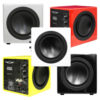
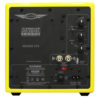

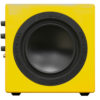


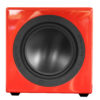
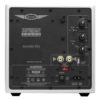

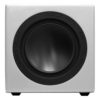
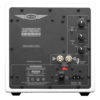


There are no reviews yet.